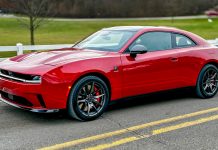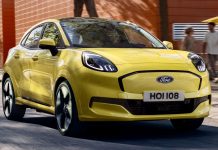In September 2007, Chrysler LLC announced the formation of ENVI – representing the first four letters of “environmental” – the new in-house organization was to focus on electric-drive production vehicles and related advanced technologies. Led by Lou Rhodes, President – ENVI, and Vice President – Advanced Vehicle Engineering, the ENVI team had access to the vast resources within Chrysler. However, ENVI would be virtually unknown until the 2009 North American International Auto Show (NAIAS) in Detroit, where it showcased five electrified vehicles (EVs).
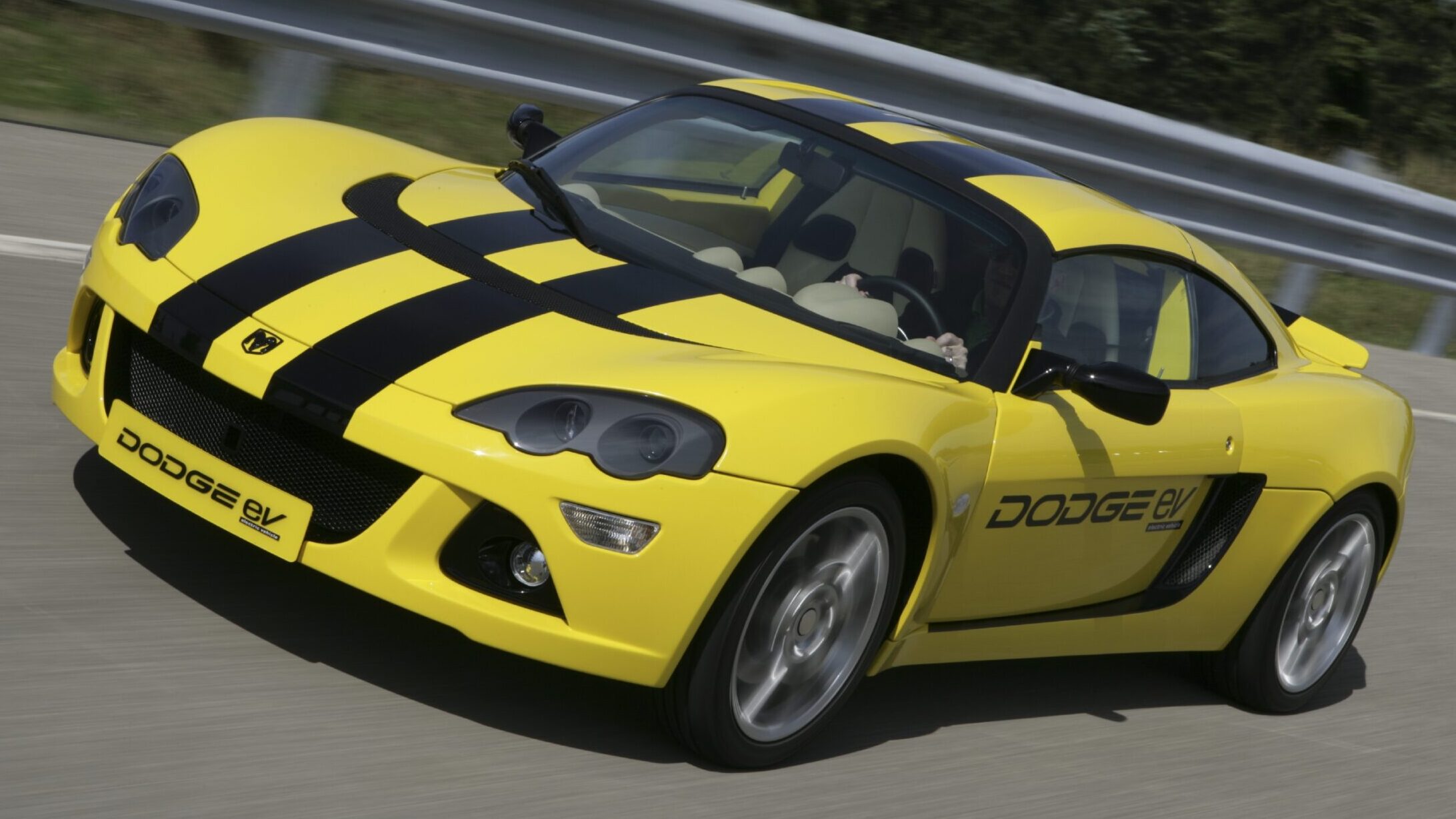
One of those vehicles was the Circuit EV, an all-electric Dodge sports car based on the Lotus Europa S. A similar rear mid-engined, rear-wheel-drive (RWD) formula was also under production by then-beginner EV automaker Tesla, using a Lotus Elise chassis. The Circuit EV combined a lithium-ion battery pack with a 200 kW (270 horsepower) and 480 lb.-ft. of torque electric motor.
Compared to the 2009 Tesla Roadster, which had an output of 185 kW (248 horsepower) and 200 lb.-ft. of torque, both cars would use single-speed BorgWarner transmissions.
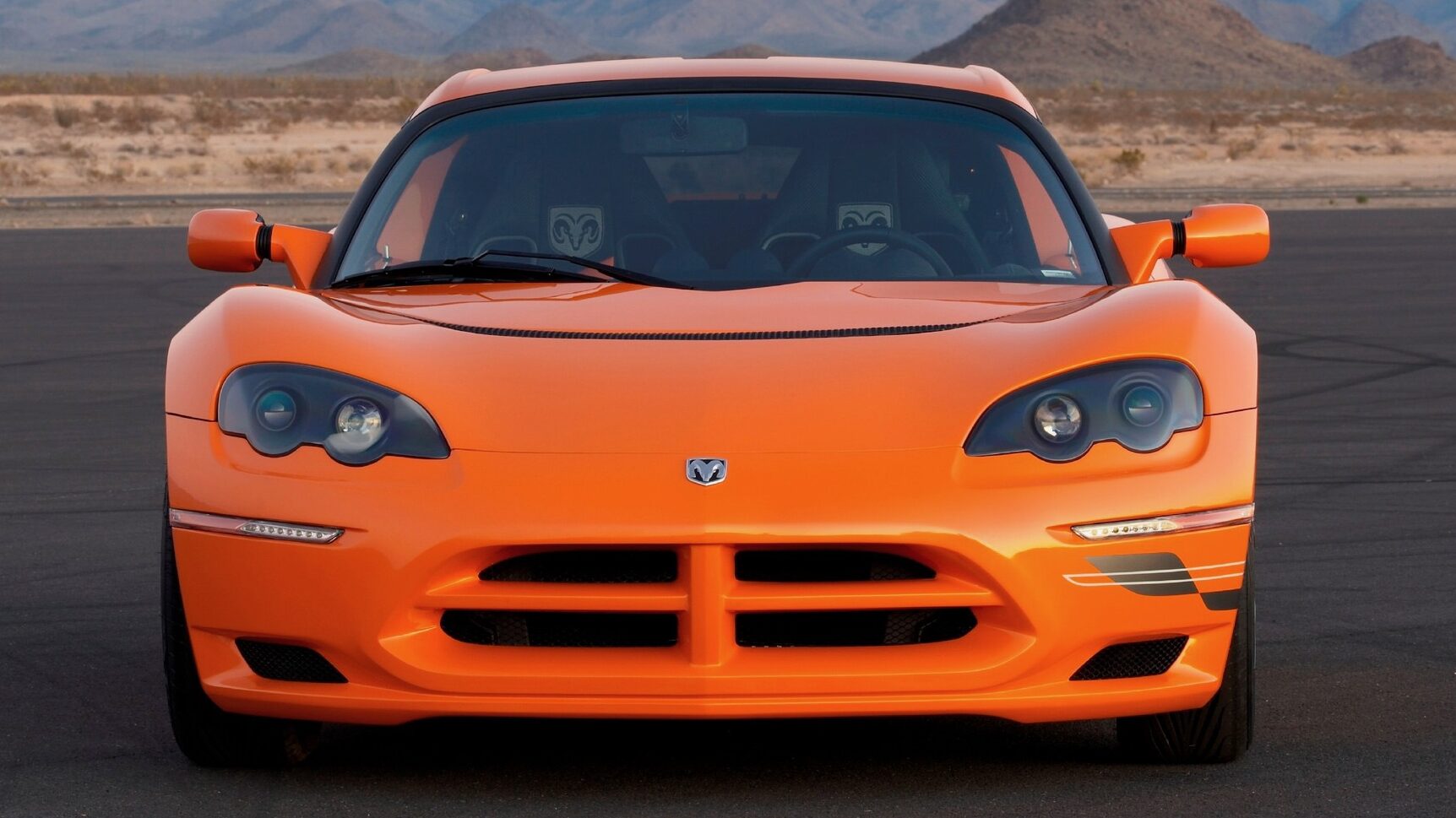
When it originally debuted, the Circuit EV was dubbed “EV” and continued wearing Lotus front and rear fascias. A month later, an updated version would debut at the Geneva Motor Show, with the Circuit EV name and proudly wearing distinct Dodge-styled front and rear fascias. The team also fitted the car with the MyGIG infotainment system found in numerous Chrysler, Dodge, Jeep®, and Ram vehicles at the time.
Ralph Gilles, then head of Stellantis Design and Vice President of Design, stated, “The Dodge Circuit EV offers an extremely fun-to-drive, expressive sports car without fuel consumption and with virtually no impact on the environment.”
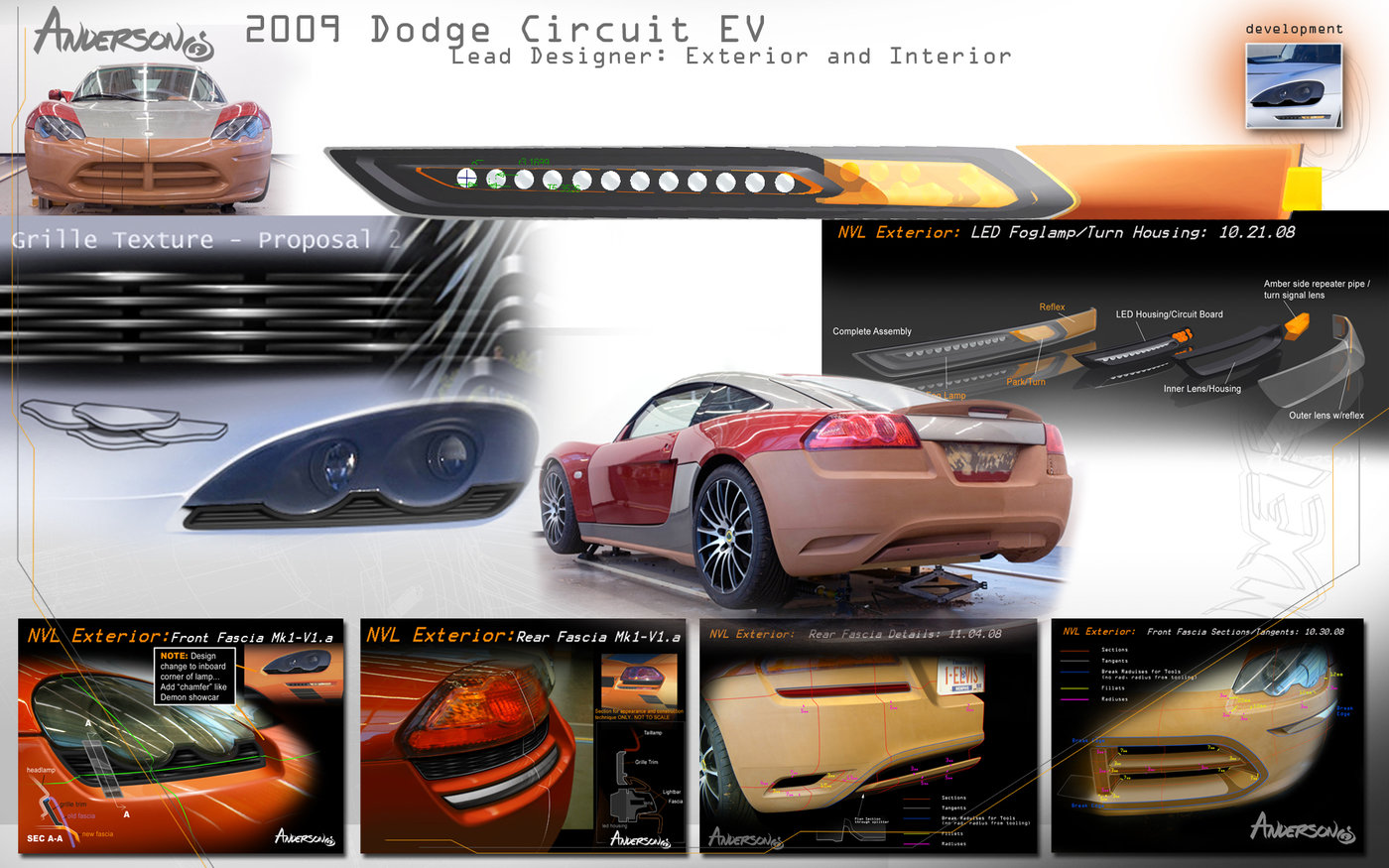
Inside, the Circuit EV didn’t differ much from the Lotus Europa S it was based on. Two primary analog-face gauges were nestled within a leather-covered instrument cluster. A digital display conveyed information regarding the electric-drive system. The seats featured deep bolsters and were covered in premium leather. Alcantara covered the center console and the width of the instrument panel.
The Circuit EV also delivered all the convenience features of a traditional sports car at the time, with a premium audio system, power windows, power door locks, air conditioning, and even cruise control.
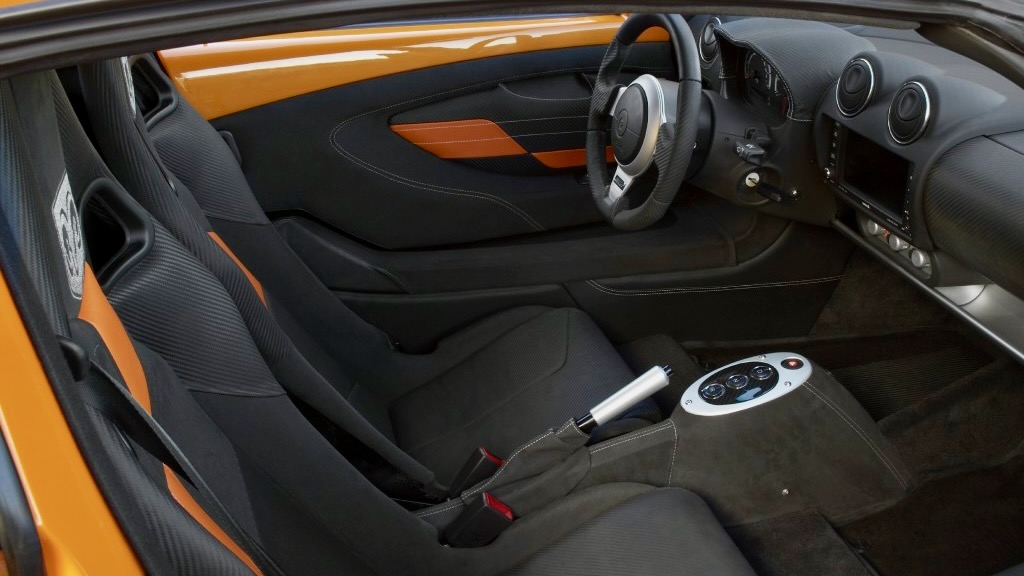
Regarding performance, Dodge was very secretive about the Circuit EV’s numbers. While they did say it could perform a 0 to 60 mph time of less than 4 seconds, nothing was official. Dodge even showcased an early prototype of the car in a drag race against the then-new 425-horsepower 2009 Dodge Challenger SRT-8 with a 6-speed manual. Dodge claimed the car would complete the 1/4-mile in 13 seconds and had a top speed of 120 mph. Again, the numbers were very similar to the Tesla Roadster.
The numbers regarding charging and range don’t seem impressive by today’s standards. The Circuit EV delivered a range varying from 150 to 200 miles (241 to 322 km) depending on driving style. Recharging was very simple, as it could be plugged into a standard 120-volt outlet for 8 hours of recharge time or about 4 hours using a 240-volt outlet. Sorry, no DC fast-charging capability here.
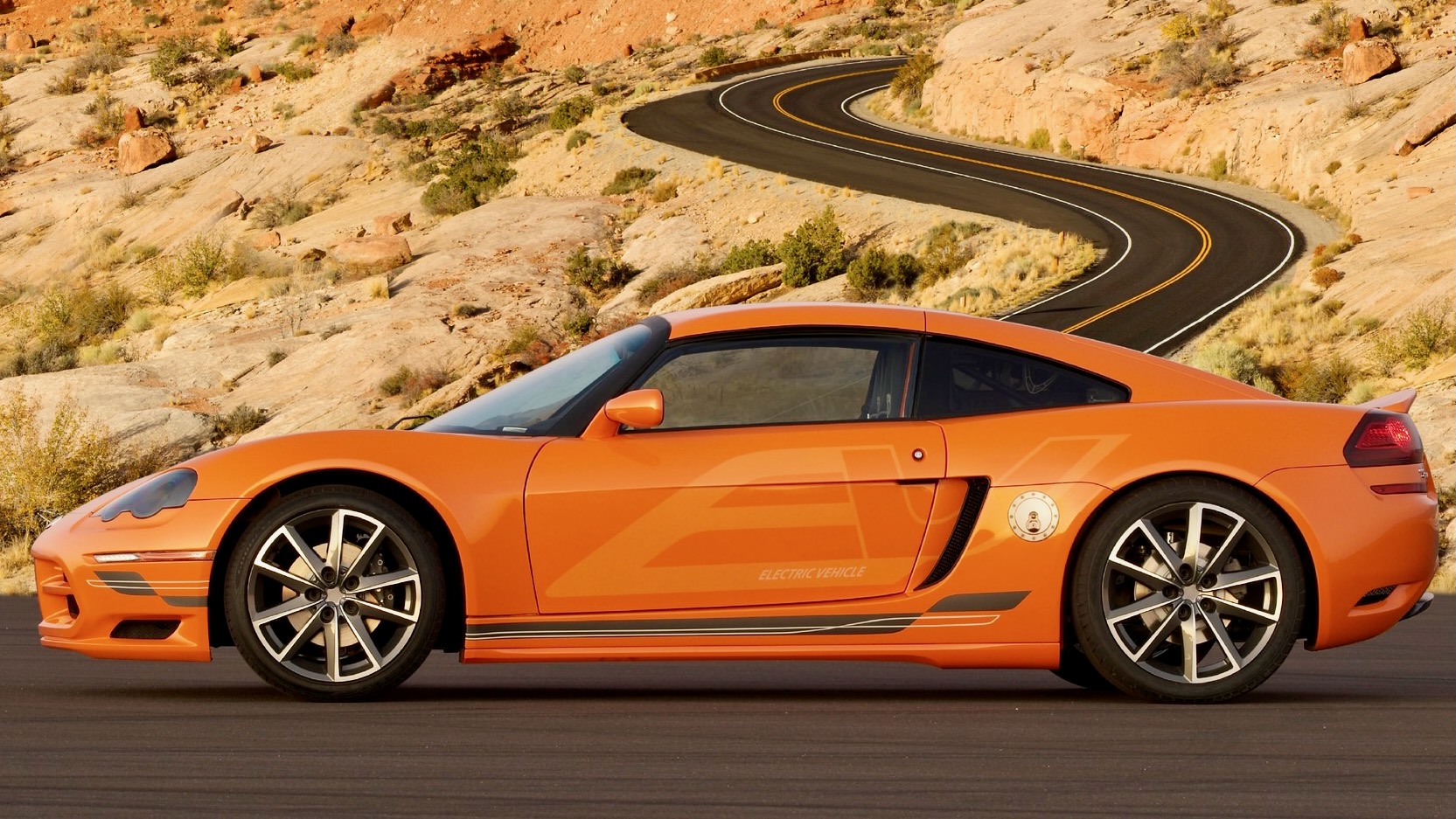
ENVI went on to build several prototypes of the Circuit EV, intending to bring it to production in 2010. However, the economic collapse during the financial crises of 2007 and 2008 made Chrysler go into cost-cutting mode, and the program ended once Chrysler LLC filed for Chapter 11 bankruptcy protection on April 30, 2009. In November of that year, FIAT disbanded ENVI and dropped its entire lineup from its future product plans.
Considering Tesla’s current position, it would have been interesting to see what ENVI could have accomplished if the “Great Recession” hadn’t happened.
Source: Scott Anderson / Coroflot.com



